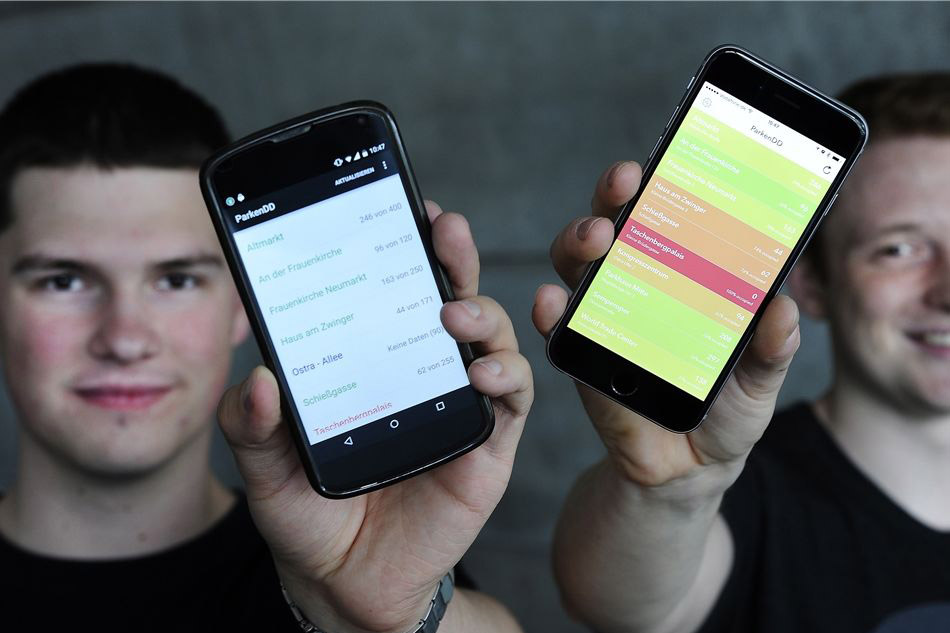
The Idea
The OK Lab team in Dresden wanted to show what open data can do. After all, the topic is quite abstract for most people. Therefore, they focused on something ordinary: transportation. Many people use cars on a regular basis and thus depend on parking spaces. “Parking in the city concerns everybody”, says Paul Balzer, software developer. This is how the idea of an app that indicated free parking spaces in Dresden’s car parks came up.
We have made ourselves open data, so to say.
The First Obstacle
Although the city releases the figures for free parking places, they weren’t presented in the format that the team needed. “We wrote a program that downloads and stores the figures from the city’s website,” says Paul. “We have made ourselves open data, so to say.” He believes that the city tolarates these data queries. What’s more: not only are the data displayed, they are also analyzed and visualized by a software. Their model can even predict the availability of a parking space in the future.
Good Tips
Teamwork. “The people just wanted in,” says Paul. The ParkenDD app is now available for both iOS and Android phones. The team members each drew from their areas of expertise: “Everyone took a small part, like a toothed wheel.” A friend even translated the app into Czech, so that tourists from the nearby border region can better come through town.
The Next Step
Paul wants more data with which programmers can work directly: “Some might say, ‘but I see it on the internet, it’s open!’” But a PDF document is merely the starting point for developers. Ultimately, a program reads data differently from a person. “We use 80 percent of our time to make things machine-readable,” says Paul. A technical interface would help immensely: “You send a request, and get a reply.” That would decrease the work and open up more opportunities for interesting ideas. “Something like the allocation of funds in the EU, budgeting for a city, or perhaps an overview of comissions - you could create wonderful visualizations for cash flows. That would be possible if there were better machine interfaces.”